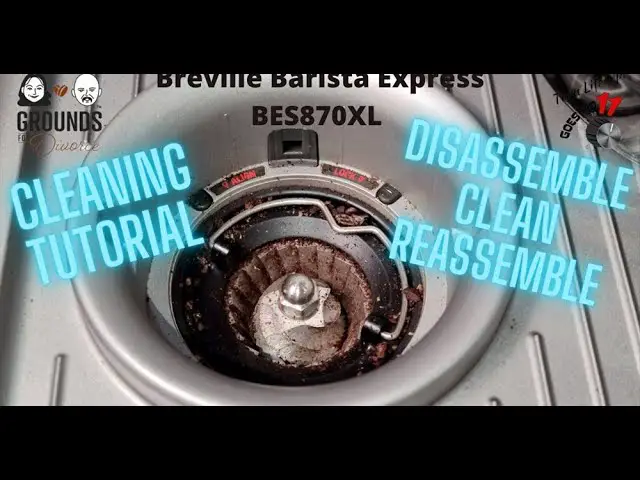Ge Electric Range Troubleshooting: Quick Fixes & Tips
Is your GE electric range acting up just when you need it most? Whether it’s not heating properly, the burners won’t turn on, or the oven is behaving strangely, these issues can be beyond frustrating.
But don’t worry—you’re not alone, and you don’t have to be a tech expert to figure out what’s wrong. With a little guidance, you can troubleshoot many common problems yourself and possibly save on costly repairs. We’ll walk you through simple, step-by-step solutions to get your GE electric range back in working order.
Ready to take control and fix that pesky problem? Let’s get started!

Credit: alphatekappliance.com
Common Range Problems
Your GE electric range is the heart of your kitchen, but like any appliance, it can run into problems. Whether it’s a burner that refuses to heat up or an oven that won’t cook your food evenly, these issues can quickly turn a pleasant cooking experience into a frustrating one. Let’s dive into some of the most common range problems, so you can troubleshoot and get back to cooking in no time.
Burners Not Heating
Are you turning on a burner, only to find it remains cold? This is often caused by a faulty burner element, a loose connection, or even a damaged socket. Before you panic, try swapping the burner with one from another spot on your range to see if it works there—this simple test can tell you if the issue is with the burner itself or something deeper.
If the burner works in a different spot, the socket might be the problem. In that case, you’ll need to check for signs of damage or corrosion. Always unplug your range before inspecting electrical components to stay safe.
Oven Not Heating Properly
Is your oven taking forever to preheat or cooking unevenly? This could point to a faulty heating element or a malfunctioning temperature sensor. A quick way to test this is by setting your oven to a specific temperature and using an oven thermometer to see if it matches.
If the temperature is off, the sensor might be loose or broken. Tightening the sensor or replacing it altogether can often solve the issue. Don’t forget to check for grease or food buildup, as these can block heat and cause uneven cooking.
Control Panel Issues
What happens when the buttons on your control panel stop responding? This can be incredibly frustrating, especially if you’re trying to adjust a setting mid-cooking. Often, the problem lies in a worn-out touchpad or a disconnected ribbon cable.
Start by gently cleaning the control panel with a damp cloth. If that doesn’t work, you might need to inspect the connections or replace the control panel entirely. Keep in mind, this is a more technical fix, so calling a professional might save you time and effort.
Strange Noises Or Smells
Have you noticed weird buzzing noises or burning smells coming from your range? These could indicate anything from a loose component to an electrical issue. Ignoring these signs could lead to bigger problems, so it’s best to address them quickly.
A burning smell, for example, might just be grease burning off, but if it persists, it could mean faulty wiring. Unplug your range and visually inspect for any loose wires or melted insulation. Strange noises, on the other hand, often point to a misaligned fan or motor that needs adjustment or replacement.
By understanding these common issues, you can tackle minor problems before they escalate. Which of these problems has your range experienced, and how did you handle it? Share your story in the comments below—your experience might just help someone else!

Credit: www.youtube.com
Quick Fixes For Burner Issues
Having issues with the burners on your GE electric range can be frustrating, especially when you’re in the middle of cooking. But don’t panic—you can often fix these problems quickly without calling a professional. Let’s dive into some practical solutions to get your burners working like new.
Checking Power Connection
Start by checking the power connection. Is your range properly plugged into the wall socket? Sometimes, the cord can loosen if bumped or shifted. Ensure it’s securely plugged in.
Next, check your circuit breaker. If there’s been a power surge, the breaker might have tripped. Switch it off and on again to reset the connection. You’d be surprised how often this simple step solves the issue.
Inspecting Burner Coils
Burner coils are another common trouble spot. Remove the coil from its socket and inspect it closely. Look for visible damage like cracks or burnt spots. These signs indicate the coil might need replacement.
Use a multimeter to test the coil’s continuity. If the reading shows no continuity, the coil is faulty and needs to be replaced. Don’t have a multimeter? Borrow one from a neighbor or pick one up at your local hardware store—it’s worth the small investment.
Replacing A Faulty Burner
If you’ve identified a faulty burner, replacing it is straightforward. Purchase a compatible replacement burner—check your range’s model number to ensure the new burner fits.
To replace it, detach the old burner by pulling it out of its socket. Slide the new burner into place until it clicks securely. Test it by turning the knob to see if it heats up. Problem solved!
Why wait to fix burner issues when many solutions are quick and easy? Take these steps today, and save yourself the hassle of a cold stovetop during your next meal prep!
Oven Heating Problems
Oven heating issues can disrupt your cooking routine. They can result in unevenly baked dishes or cold meals. Understanding the root cause of the problem can save you time and money. Below are steps to troubleshoot common heating issues in your GE electric range.
Testing The Heating Element
The heating element powers your oven’s heat. If it’s faulty, the oven won’t heat properly. Start by unplugging the oven to ensure safety. Locate the heating element at the bottom or back of the oven. Inspect it for visible damage like cracks or burns. If it looks damaged, replace it immediately.
If no damage is visible, use a multimeter to test for continuity. A lack of continuity means the element is defective. Replace it to restore proper heating.
Calibrating The Oven Temperature
Sometimes, the oven temperature may not match the set value. This can lead to undercooked or overcooked meals. To check, use an oven thermometer and compare the actual temperature to the setting. If there’s a significant difference, recalibrate the oven.
Refer to your user manual to adjust the temperature settings. Most GE electric ranges allow manual calibration through the control panel. Follow the steps carefully to avoid further issues.
Resetting The Circuit Breaker
A tripped circuit breaker can cut power to the oven. This might cause it to stop heating. Check your home’s electrical panel for any tripped breakers. If you spot one, reset it by flipping it off, then back on.
After resetting, test the oven to see if it heats correctly. If the problem persists, consult an electrician. There might be a deeper electrical issue affecting your range.
Resolving Control Panel Errors
The control panel on your GE electric range plays a crucial role. It allows you to select settings, adjust temperatures, and monitor cooking progress. When errors occur, they can disrupt your cooking routine. Understanding how to troubleshoot these issues can save time and prevent unnecessary stress.
Most control panel errors result from minor malfunctions or system glitches. These can often be fixed without professional help. Let’s explore the steps to resolve these errors effectively.
Checking For Error Codes
GE electric ranges display error codes on the control panel. These codes provide clues about the problem. Start by noting the exact code shown on the display. Refer to your appliance manual to understand its meaning. Common codes indicate issues like temperature sensor failure or keypad malfunctions.
If you’ve misplaced the manual, check the GE website for a list of error codes. Some errors may require resetting the panel, while others signal deeper hardware issues.
Resetting The Control Panel
A simple reset can often clear minor glitches on the control panel. To reset, unplug the range from the power source. Wait for at least one minute before plugging it back in. This process allows the control system to reboot.
If the error persists after resetting, try turning off the circuit breaker for the range. Leave it off for a minute, then turn it back on. Check the display to see if the error code disappears.
When To Replace The Control Board
Sometimes, the control board itself may be faulty. If resetting doesn’t resolve the issue, the board might need replacement. Frequent error codes or unresponsive buttons are signs of a failing control board.
Replacing the control board is usually a task for a professional technician. Attempting this on your own can lead to further damage. Contact a licensed repair specialist to ensure proper installation.
Addressing Unusual Noises Or Smells
Unusual noises or smells from your GE electric range can be alarming. They may indicate underlying issues that need attention. Addressing these problems promptly ensures your appliance works efficiently and safely. Understanding the causes can help you fix them quickly.
Identifying The Source Of Noise
Noises from your range can signal loose components or damaged parts. Check if the fan or motor is rattling during operation. Inspect burners for proper placement and alignment. Listen for ticking sounds, which might indicate an ignition issue. Pinpointing the source prevents further damage.
Dealing With Burning Smells
A burning smell often comes from food residue or grease buildup. Examine the oven interior for spills or burnt fragments. Check if plastic or packaging accidentally melted inside. Inspect wires or components for overheating signs. Removing the cause eliminates the smell effectively.
Cleaning For Better Performance
Routine Maintenance Tips
Regular maintenance ensures your GE electric range works efficiently and lasts longer. Simple upkeep can prevent costly repairs and ensure a safer kitchen. Follow these routine maintenance tips to keep your range in top condition.
Cleaning The Range Components
Clean the burners, grates, and oven regularly to remove grease and debris. Use a soft cloth with warm, soapy water for most surfaces. Avoid harsh chemicals that may damage the finish or internal parts. For stubborn stains, use a baking soda paste and gently scrub. Don’t forget to clean the knobs and the control panel to prevent buildup.
Inspecting Wires And Connections
Check the wires and connections for wear or damage. Look for frayed insulation or loose plugs. Turn off the power before examining internal components. If you notice any issues, stop using the range and consult a technician. Regular inspections can help you catch small problems early.
Scheduling Professional Servicing
Hire a professional to service your range at least once a year. They can inspect and clean parts that are difficult to access. Technicians will check the heating elements, thermostat, and electrical connections. Professional servicing ensures your range operates safely and efficiently.
When To Call A Technician
Troubleshooting a GE electric range can be simple for minor issues. But there are times when professional help becomes essential. Knowing when to call a technician can save time and money. It also prevents further damage to your appliance.
Signs Of Major Electrical Issues
If your range is tripping the circuit breaker, it signals trouble. Burning smells or sparking wires are signs of serious electrical faults. A technician can safely inspect and repair these issues. Ignoring these signs might lead to safety hazards or permanent damage.
Persistent Problems After Diy Fixes
DIY fixes work for small problems like cleaning or tightening parts. But if the same issue keeps coming back, it could mean a deeper problem. Persistent heating issues or error codes need professional tools and expertise. A technician ensures thorough diagnosis and repair.
Warranty And Support Options
Check your GE range warranty before calling a technician. Some repairs may be covered under the warranty terms. Contacting GE support can also help you find authorized service providers. Using authorized technicians protects your warranty and ensures reliable repairs.

Credit: paradiseapplianceservice.com
Conclusion
Troubleshooting a GE electric range doesn’t have to be overwhelming. Start with simple checks like power supply and settings. Addressing common issues early can save time and prevent bigger problems. Always follow the user manual for guidance and safety. If problems persist, contacting a professional is the best option.
Regular maintenance helps avoid frequent malfunctions and keeps your range running smoothly. By staying proactive, you can enjoy a reliable and efficient appliance for years.






